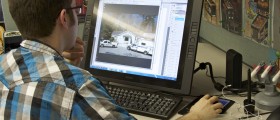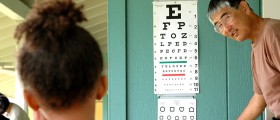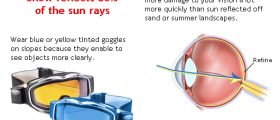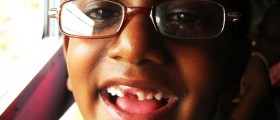
People can suffer from numerous vision problems, all of which affect one's ability to see correctly. Basically, our sense of vision is a delicate system, consisting of numerous parts which all work in unison. Thus, whenever something goes wrong in this system, our vision gets impaired to a certain extent.
How Can We See?
Basically, any image we see is formed from the light reaching our eyes, getting bent by the eye lenses before reaching the retina. The retina forms the object we see and records it. However, the image perceived at this step is formed in an upside-down manner. The next step involves making the image smaller and sending it to the brain's visual center via the optic nerve. The brain then rotates the image enabling us to see things as they are.
So, whenever this highly delicate system faces some kind of dysfunction or damage, our vision gets affected negatively as well.
Myopia
Myopia or nearsightedness is a condition commonly affecting teenagers and children. As the name of the condition may suggest, people who suffer from it see nearby objects clearly while seeing objects which are far away blurry. This happens due to the fact that the eyeball of an individual is too long or the cornea is too steep. Then, the image received is not focused on the retina, as it should be, but, rather, on the vitreous humor. Nevertheless, this problem is treatable either through wearing glasses or contact lenses with corrective qualities or through undergoing a surgery.
Hypermetropia
If a person cannot see nearby objects but has no problems focusing on distant objects, he/she suffers from farsightedness or hypermetropia. In this case, the image is focused behind the retina due to the fact that the eye is shorter than necessary or that the cornea is too flat. This condition usually appears as soon as a person is born and remains with him/her for life. It can be corrected through contact lenses or glasses although surgery is an alternative here as well.
Astigmatism
A situation where a person cannot see clear regardless of the distance is called astigmatism. This means that the surface of a person's cornea is not even but has different curvature. The same treatment as the previously mentioned ones is used in cases of astigmatism too.
Presbyopia
As people age, they have increased chances of developing presbyopia, taking its toll in the early or mid 40s. One's eyes gradually lose their capability on focusing on nearby objects and tend to lose focus often. Different kinds of lenses are prescribed to patients diagnosed with presbyopia and surgery is also one of the corrective alternatives.
Scotoma
Other vision issues which may affect people living in this modern world are scotoma or vision problems due to hormonal changes during pregnancy.

















Your thoughts on this
Loading...